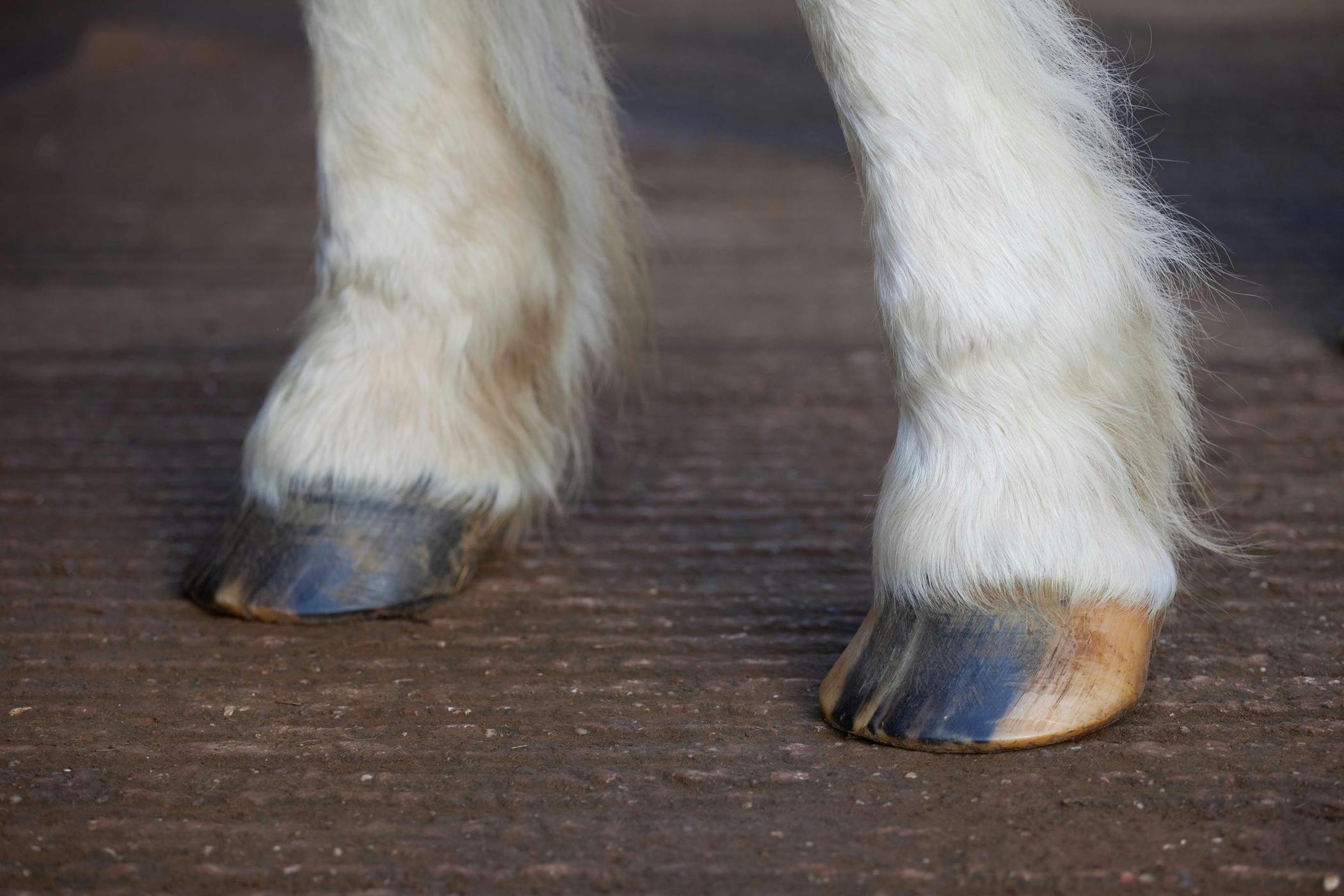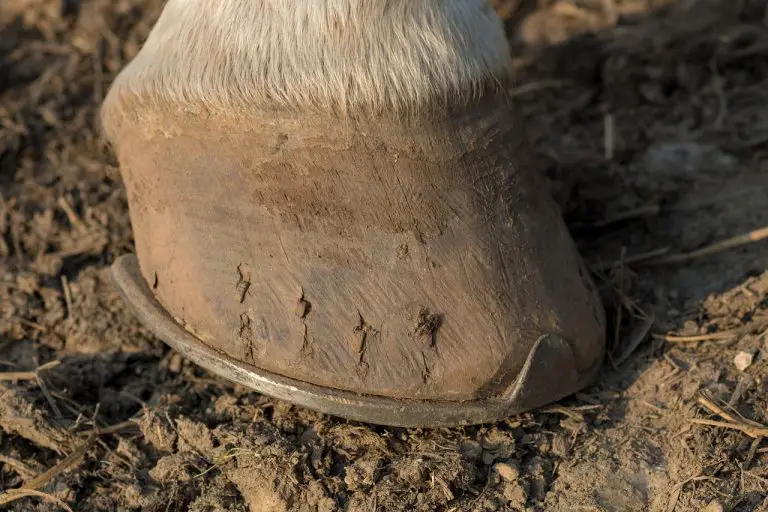When it comes to equine health, one of the most common ailments that horses face is the issue of quarter cracks. Quarter cracks are a type of hoof disease that occur when the hoof wall cracks, typically starting at the quarter of the hoof and then moving upward. These cracks can be incredibly painful for horses, which is why it’s important for horse owners and caretakers to be able to recognize the signs of quarter cracks and take steps to treat and prevent the issue.
What Causes Quarter Cracks?
There are a number of different factors that can contribute to the development of quarter cracks in horses. One of the most common is improper hoof care. When a horse’s hooves are not trimmed regularly or correctly, or when the horse is shod improperly, the hooves can become weak and brittle, making them more prone to developing quarter cracks. Additionally, any type of trauma or injury to the hoof can also increase the risk of developing quarter cracks.
Another common cause of quarter cracks is a nutritional deficiency. When horses don’t receive an adequate amount of vitamins and minerals, their hooves can become weak and more prone to developing cracks. Finally, horses that spend a lot of time on hard, unforgiving surfaces, such as concrete or asphalt, are also more likely to develop quarter cracks.
Signs of Quarter Cracks
If your horse develops quarter cracks, there are a number of signs that you might notice. These can include:
- Cuts or cracks in the hoof wall
- Lameness or limping
- Swelling of the affected area
- Inflammation around the foot
- Changes in the horse’s gait or movement
Treating Quarter Cracks
If your horse develops quarter cracks, it’s important to take steps to treat the issue as soon as possible in order to minimize pain and prevent the crack from spreading further. There are a number of different treatment options that your veterinarian may recommend, depending on the severity of the crack and its underlying causes.
One common treatment for quarter cracks is to use specialized shoes or inserts that help to stabilize and protect the hoof wall. This can help to prevent the crack from spreading and minimize pain and discomfort for the horse. Additionally, your veterinarian may recommend topical treatments or medications to help reduce inflammation and promote healing.
In some cases, more invasive treatments may be necessary. For example, if the quarter crack is severe or has spread to other parts of the hoof, your veterinarian may recommend surgery to remove damaged tissue and promote healing.
Preventing Quarter Cracks
While it’s not always possible to prevent quarter cracks from occurring, there are a number of steps that horse owners and caretakers can take to minimize the risk of developing this painful condition. Some of the most important steps to take include:
- Maintaining proper hoof care, including regular trimming and shoeing
- Providing your horse with a nutritious and well-balanced diet
- Keeping your horse’s living quarters clean and free of debris
- Limiting the amount of time your horse spends on hard, unforgiving surfaces
- Working with a qualified veterinarian or equine specialist to monitor your horse’s health and address any issues as soon as they arise
Conclusion
Quarter cracks can be a painful and frustrating issue for horse owners and caretakers to deal with. However, by taking steps to prevent and treat this issue, you can help to keep your horse healthy and happy, both now and in the future.

Treating Quarter Cracks
One common treatment for quarter cracks is to use specialized shoes or inserts that help to stabilize and protect the hoof wall. This can help to prevent the crack from spreading and minimize pain and discomfort for the horse. Additionally, your veterinarian may recommend topical treatments or medications to help reduce inflammation and promote healing.
In some cases, more invasive treatments may be necessary. For example, if the quarter crack is severe or has spread to other parts of the hoof, your veterinarian may recommend surgery to remove damaged tissue and promote healing.
Preventing Quarter Cracks
While it’s not always possible to prevent quarter cracks from occurring, there are a number of steps that horse owners and caretakers can take to minimize the risk of developing this painful condition. Some of the most important steps to take include:
- Maintaining proper hoof care, including regular trimming and shoeing
- Providing your horse with a nutritious and well-balanced diet
- Keeping your horse’s living quarters clean and free of debris
- Limiting the amount of time your horse spends on hard, unforgiving surfaces
- Working with a qualified veterinarian or equine specialist to monitor your horse’s health and address any issues as soon as they arise
If you are searching about Case Study: Dressage Horse with a Chronic Quarter Crack you've came to the right web. We have 7 Pictures about Case Study: Dressage Horse with a Chronic Quarter Crack like Quarter Cracks in Horses: Causes and Treatment Approaches - Just for my, Treating Quarter Cracks | EquiMed - Horse Health Matters and also Quarter Cracks - Horse Lovers Only.com. Read more:
Case Study: Dressage Horse With A Chronic Quarter Crack
crack dressage cracks
Quarter Cracks - Horse Lovers Only.com
 horseloversonly.com
horseloversonly.com cracks quarter hoof crack
Quarter Crack In Horses - Symptoms, Causes, Diagnosis, Treatment
 wagwalking.com
wagwalking.com quarter crack horse horses
Treating Quarter Cracks | EquiMed - Horse Health Matters
 equimed.com
equimed.com quarter horse cracks crack hoof typical treating equimed
Pin On Quarter Cracks
 www.pinterest.com
www.pinterest.com crack cracks
Quarter Crack? Don’t Blame The Farrier - Horse Racing News | Paulick Report
quarter crack horse hoof farrier blame don
Quarter Cracks In Horses: Causes And Treatment Approaches - Just For My
 justformyhorse.com
justformyhorse.com Quarter horse cracks crack hoof typical treating equimed. Quarter crack horse hoof farrier blame don. Case study: dressage horse with a chronic quarter crack
Post a Comment for "Quarter Cracks In Horses Hooves"